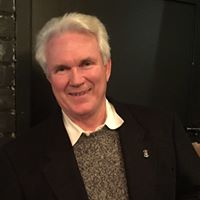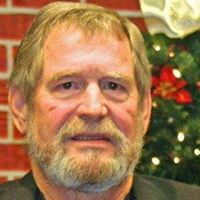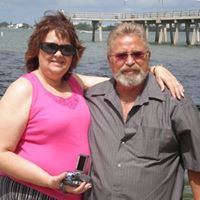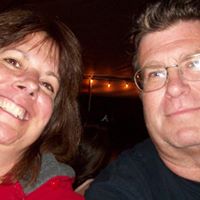Charles Lawrence Nicholson
age ~79
from Rochester, NY
- Also known as:
-
- Charles L Nicholson
- Charles C Nicholason
- Chaels Nicholson
- Charles Lnicholson
Charles Nicholson Phones & Addresses
- Rochester, NY
- 1412 Ellsworth St, Philadelphia, PA 19146
Work
-
Company:The pennsylvania state universityAug 2011
-
Position:General chemistry laboratory section supervisor / teaching assistant
Education
-
School / High School:Thomas Jefferson University
Languages
English
Specialities
Family Medicine
Medicine Doctors

Dr. Charles E Nicholson, Woodbury NJ - MD (Doctor of Medicine)
view sourceSpecialties:
Family Medicine
Address:
730 N Broad St, Woodbury, NJ 08096
Languages:
English
Education:
Medical School
Thomas Jefferson University
Thomas Jefferson University

Charles P. Nicholson
view sourceDescription:
Dr. Nicholson graduated from the University of Alabama School of Medicine in 1986. He works in Edina, MN and 2 other locations and specializes in General Surgery and Vascular Surgery. Dr. Nicholson is affiliated with Fairview Ridges Hospital and Fairview Southdale Hospital.

Charles Preston Nicholson
view sourceSpecialties:
Surgery
Education:
University of Tennessee (1958)
Name / Title
Company / Classification
Phones & Addresses
Show Star Digital
Professional Services (General)
Professional Services (General)
3804 St. Elmo Avenue, Suite 215, Chattanooga, TN 37409
Director
GENERAL ELECTRIC FLEET SERVICES, INC
Medical Doctor
Presidential Portraits
Whol Durable Goods
Whol Durable Goods
West Deptford, NJ 08096
Director, Chairman
DECIMUS CORPORATION
Director
YALE FINANCIAL SERVICES, INC
Director, Chairman
GE CAPITAL VEF MUNICIPAL CORPORATION
General Partner
Branding Iron, Ltd., A California Limited Partnership
Resumes

Charles Nicholson Phoenixville, PA
view sourceWork:
THE PENNSYLVANIA STATE UNIVERSITY
Aug 2011 to 2000
General Chemistry Laboratory Section Supervisor / Teaching Assistant ORTHOVITA / STRYKER ORTHOBIOLOGICS
Malvern, PA
Jul 2007 to Jul 2011
Quality Biochemist WEST PHARMACEUTICAL SERVICES
Lionville, PA
Mar 2003 to Jul 2007
Associate Chemist
Aug 2011 to 2000
General Chemistry Laboratory Section Supervisor / Teaching Assistant ORTHOVITA / STRYKER ORTHOBIOLOGICS
Malvern, PA
Jul 2007 to Jul 2011
Quality Biochemist WEST PHARMACEUTICAL SERVICES
Lionville, PA
Mar 2003 to Jul 2007
Associate Chemist
Education:
The Catholic University of America
Washington, DC
May 2002
Bachelor of Science in Biochemistry
Washington, DC
May 2002
Bachelor of Science in Biochemistry
Isbn (Books And Publications)


Agricultural Policies of Yemen: Implications for Women in Agriculture
view sourceAuthor
Charles F. Nicholson
ISBN #
0788148206

Smallholder Dairy Technology in Coastal Kenya: An Adoption and Impact Study
view sourceAuthor
Charles F. Nicholson
ISBN #
9291460672

Educational Applications of the Wisc-III: A Handbook of Western Psychological Services
view sourceAuthor
Charles L. Nicholson
ISBN #
0874242940




A Field Guide to Southern Speech: A Twelve-Gauge Lexicon for the Duck Blind, the Deer Stand, the Skeet Shoot, the Bass Boat, and the Backyard Barbec
view sourceAuthor
Charles Nicholson
ISBN #
0874830982
License Records
Charles Blain Nicholson
License #:
123579 - Expired
Category:
Nursing Support
Issued Date:
Jun 20, 2016
Effective Date:
Jun 20, 2016
Type:
Nurse Aide
Us Patents
-
Oxygen Gas Diffusion Electrode
view source -
US Patent:51494140, Sep 22, 1992
-
Filed:Nov 20, 1986
-
Appl. No.:6/932835
-
Inventors:John S. C. Chiang - Mercerville NJ
Charles J. Nicholson - New Hope PA -
Assignee:FMC Corporation - Philadelphia PA
-
International Classification:G25B 1112
-
US Classification:204294
-
Abstract:The invention is a porous gas diffusion electrode suitable for manufacturing hydrogen peroxide by the reduction of oxygen in an alkaline electrolyte and of a process for fabricating the electrode.
-
Tunable, Controlled-Release, Urethane-Containing Elastomers And Processes Of Forming The Same
view source -
US Patent:20220257828, Aug 18, 2022
-
Filed:May 9, 2022
-
Appl. No.:17/662462
-
Inventors:- Telford PA, US
Carissa Smoot - Harleysville PA, US
Dennis Shull - Phoenixville PA, US
Todd Crumbling - Perkasie PA, US
John D'Ottavio - Telford PA, US
Peter D. Gabriele - Frisco TX, US
Jeremy J. Harris - Doylestown PA, US
Charles Brendan Nicholson - Coopersburg PA, US
Jared Ely - Quakertown PA, US -
International Classification:A61L 27/18
A61L 27/54
A61K 31/522
B29C 67/24
B33Y 80/00 -
Abstract:A process forms an implantable product including poly(glycerol sebacate) urethane (PGSU) loaded with an active pharmaceutical ingredient (API). The process includes homogeneously mixing a flowable poly(glycerol sebacate) (PGS) resin with the API and a catalyst to form a resin blend. The process also includes homogeneously combining the resin blend with an isocyanate to form a reaction mixture and injecting the reaction mixture to form the PGSU loaded with the API. An implantable product includes a PGSU loaded with an API. In some embodiments, the implantable product includes at least 40% w/w of the API, and the implantable product releases the API by surface degradation of the PGSU at a predetermined release rate for at least three months under physiological conditions. In some embodiments, the PGSU is formed from a PGS reacted with an isocyanate at an isocyanate-to-hydroxyl stoichiometric (crosslinking) ratio in the range of 1:0.25 to 1:1.25.
-
Tunable, Controlled-Release, Urethane-Containing Elastomers And Processes Of Forming The Same
view source -
US Patent:20210138109, May 13, 2021
-
Filed:Jan 13, 2021
-
Appl. No.:17/148130
-
Inventors:- Telford PA, US
Carissa SMOOT - Harleysville PA, US
Dennis SHULL - Phoenixville PA, US
Todd CRUMBLING - Perkasie PA, US
John D'OTTAVIO - Telford PA, US
Peter D. GABRIELE - Frisco TX, US
Jeremy J. HARRIS - Doylestown PA, US
Charles Brendan NICHOLSON - Coopersburg PA, US
Jared ELY - Quakertown PA, US -
International Classification:A61L 27/18
A61L 27/54
A61K 31/522
B29C 67/24
B33Y 80/00 -
Abstract:A process forms an implantable product including poly(glycerol sebacate) urethane (PGSU) loaded with an active pharmaceutical ingredient (API). The process includes homogeneously mixing a flowable poly(glycerol sebacate) (PGS) resin with the API and a catalyst to form a resin blend. The process also includes homogeneously combining the resin blend with an isocyanate to form a reaction mixture and injecting the reaction mixture to form the PGSU loaded with the API. An implantable product includes a PGSU loaded with an API. In some embodiments, the implantable product includes at least 40% w/w of the API, and the implantable product releases the API by surface degradation of the PGSU at a predetermined release rate for at least three months under physiological conditions. In some embodiments, the PGSU is formed from a PGS reacted with an isocyanate at an isocyanate-to-hydroxyl stoichiometric (crosslinking) ratio in the range of 1:0.25 to 1:1.25.
-
Poly(Glycerol Sebacate)-Interleukin Inhibitor Copolymers And Methods Of Making And Use
view source -
US Patent:20210024686, Jan 28, 2021
-
Filed:Oct 8, 2020
-
Appl. No.:17/065971
-
Inventors:- Telford PA, US
Carissa SMOOT - Harleysville PA, US
Charles Brendan NICHOLSON - Coopersburg PA, US
Jeremy J. HARRIS - Doylestown PA, US -
International Classification:C08G 63/12
A61K 47/55
C08G 63/81
C08G 63/133
C08G 63/123
C08G 63/06
C08G 63/78 -
Abstract:A method includes combining an alcohol-pharmaceutical conjugate, a polyol, and an aqueous liquid in a vessel. The alcohol-pharmaceutical conjugate includes a pharmaceutical compound having at least one carboxyl group attached to the polyol by an ester bond. The method also includes adding an acid monomer to the vessel and heating and removing water from the vessel to produce the polymeric material. The polymeric material includes a polyester copolymer of the acid monomer and the polyol and the pharmaceutical compound.
-
Composite Containing Poly(Glycerol Sebacate) Filler
view source -
US Patent:20200101165, Apr 2, 2020
-
Filed:Dec 4, 2019
-
Appl. No.:16/702832
-
Inventors:- Telford PA, US
Carissa SMOOT - Harleysville PA, US
Peter D. GABRIELE - Frisco TX, US
Jeremy J. HARRIS - Doylestown PA, US
Charles Brendan NICHOLSON - Coopersburg PA, US
Steven LU - Cambridge MA, US -
International Classification:A61K 47/59
A61K 47/34
C08J 3/12
C08G 63/12
C08L 67/00
C08K 3/013 -
Abstract:A filler material of a thermoset resin of a diacid/polyol, such as PGS is provided. The filler useful in forming composites, such as those in which the filler and a resin matrix are of the same material to provide a homogenous polymeric composition. Composites in which at least one of the matrix, the filler or both are PGS are also provided. Methods of forming such filler materials and composites are also disclosed. The composites allow extrusion process to form articles from materials that would not otherwise be capable of being extruded.
-
Tunable, Controlled-Release, Urethane-Containing Elastomers And Processes Of Forming The Same
view source -
US Patent:20200061240, Feb 27, 2020
-
Filed:Aug 21, 2019
-
Appl. No.:16/547175
-
Inventors:- Telford PA, US
Carissa SMOOT - Harleysville PA, US
Dennis SHULL - Phoenixville PA, US
Todd CRUMBLING - Perkasie PA, US
John D'OTTAVIO - Telford PA, US
Peter D. GABRIELE - Frisco TX, US
Jeremy J. HARRIS - Doylestown PA, US
Charles Brendan NICHOLSON - Coopersburg PA, US
Jared ELY - Quakertown PA, US -
International Classification:A61L 27/18
A61L 27/54
A61K 31/522
B33Y 80/00
B29C 67/24 -
Abstract:A process forms an implantable product including poly(glycerol sebacate) urethane (PGSU) loaded with an active pharmaceutical ingredient (API). The process includes homogeneously mixing a flowable poly(glycerol sebacate) (PGS) resin with the API and a catalyst to form a resin blend. The process also includes homogeneously combining the resin blend with an isocyanate to form a reaction mixture and injecting the reaction mixture to form the PGSU loaded with the API. An implantable product includes a PGSU loaded with an API. In some embodiments, the implantable product includes at least 40% w/w of the API, and the implantable product releases the API by surface degradation of the PGSU at a predetermined release rate for at least three months under physiological conditions. In some embodiments, the PGSU is formed from a PGS reacted with an isocyanate at an isocyanate-to-hydroxyl stoichiometric (crosslinking) ratio in the range of 1:0.25 to 1:1.25.
-
Poly(Glycerol Sebacate)-Interleukin Inhibitor Copolymers And Methods Of Making And Use
view source -
US Patent:20190016854, Jan 17, 2019
-
Filed:Jul 11, 2018
-
Appl. No.:16/032733
-
Inventors:- Telford PA, US
Carissa SMOOT - Harleysville PA, US
Charles Brendan NICHOLSON - Coopersburg PA, US
Jeremy J. HARRIS - Buckingham PA, US -
International Classification:C08G 63/12
C08G 63/06
C08G 63/78 -
Abstract:A method includes combining an alcohol-pharmaceutical conjugate, a polyol, and an aqueous liquid in a vessel. The alcohol-pharmaceutical conjugate includes a pharmaceutical compound having at least one carboxyl group attached to the polyol by an ester bond. The method also includes adding an acid monomer to the vessel and heating and removing water from the vessel to produce the polymeric material. The polymeric material includes a polyester copolymer of the acid monomer and the polyol and the pharmaceutical compound.
-
Composite Containing Poly(Glycerol Sebacate) Filler
view source -
US Patent:20170246316, Aug 31, 2017
-
Filed:Feb 24, 2017
-
Appl. No.:15/442055
-
Inventors:- Telford PA, US
Carissa SMOOT - Harleysville PA, US
Peter D. GABRIELE - Frisco TX, US
Jeremy J. HARRIS - Buckingham PA, US
Charles Brendan NICHOLSON - Coopersburg PA, US
Steven LU - Ambler PA, US -
International Classification:A61K 47/48
A61K 47/34
C08G 63/12 -
Abstract:A filler material of a thermoset resin of a diacid/polyol, such as PGS is provided. The filler useful in forming composites, such as those in which the filler and a resin matrix are of the same material to provide a homogenous polymeric composition. Composites in which at least one of the matrix, the filler or both are PGS are also provided. Methods of forming such filler materials and composites are also disclosed. The composites allow extrusion process to form articles from materials that would not otherwise be capable of being extruded.
News

Woman kidnapped by triple murder suspect convinces him to surrender
view source- Oen Nicholson, 30, will be extradited back to Oregon where he faces three murder charges for the deadly rampage that began Friday when he allegedly killed his father, Charles Nicholson, at an RV campground in the coastal city of North Bend, police said.
- Date: Jun 20, 2021
- Category: Headlines
- Source: Google

Charles Nicholson Jr.
view source
Charles Nicholson
view source
Charles H. Nicholson
view source
Charles Juggman Nicholson
view source
Charles R. Nicholson
view source
Charles Nicholson Jr.
view source
Charles David Nicholson
view source
Charles Brooks Nicholson
view sourcePlaxo

Charles Nicholson
view source"Self"
Classmates

Charles Hooper (Nicholson)
view sourceSchools:
Calvert High School Tiffin OH 1984-1988
Community:
Lawrence Hopson, Liz Lepp
Biography:
I am currently married for almost 8 years and it's been a wild ride. I have three b...

Charles Nicholson
view sourceSchools:
Southeastern Vocational-Technical High School Baltimore MD 1994-1998
Community:
Anita Byrd, James Bice

Charles Nicholson
view sourceSchools:
Lake Highland Preparatory School Orlando FL 1974-1978
Community:
Mandi Schiff, John Stanley, Hillary Pfeiffer, Wendy Perkins, Renee Griffin

Charles Nicholson
view sourceSchools:
Catholic Central High School Alpena MI 1967-1971
Community:
James Gentry, James Rose, Kay Cronk, Carol Vannocker, George O'brien

Charles Nicholson
view sourceSchools:
McDuffie High School Anderson SC 1985-1989
Community:
Joyce Black, Dannie Hardy

Charles Nicholson
view sourceSchools:
Thomson Middle School Thomson GA 2001-2005
Community:
Deborah Messer, Gaye Caldwell

Charles Nicholson
view sourceSchools:
Winyah High School Georgetown SC 1970-1974
Community:
Kenneth Laplaunt, Richard Lowrance, Jean Dingler

Charles Nicholson
view sourceSchools:
Bancroft Middle School Los Angeles CA 1970-1974
Community:
Aubrey Harrison, Lani Moore, Cynthia Renfro, Betty Mills, Duncan Fox
Myspace

Charles Nicholson
view sourceLocality:
WestLake/EastLake (Middletown), Connecticut
Gender:
Male
Birthday:
1949
Youtube
Googleplus

Charles Nicholson
Work:
Thurgood Marshall Middle School - 7th Grade Math
Education:
Belmont University - Education, George Washington University - Political Management, Tennessee State University - Political Science

Charles Nicholson
Work:
ECape, Inc. - Account Executive (2011-2011)
Center of Marketing Research in Fairhaven - Intern (2011-2011)
Center of Marketing Research in Fairhaven - Intern (2011-2011)
Education:
University of Massachusetts Dartmouth - Marketing
About:
Account Executive at eCape, Inc.

Charles Nicholson
Tagline:
Poet, pacifist and pilgrim.

Charles Nicholson
Tagline:
Charles is a pretty cool guy, eh kills aleins and doesn’t afraid of anything…

Charles Nicholson
Tagline:
In the business of connecting dots & making things happen.

Charles Nicholson

Charles Nicholson

Charles Nicholson
Tagline:
Heard about you, G+. Here we all are.
Get Report for Charles Lawrence Nicholson from Rochester, NY, age ~79









